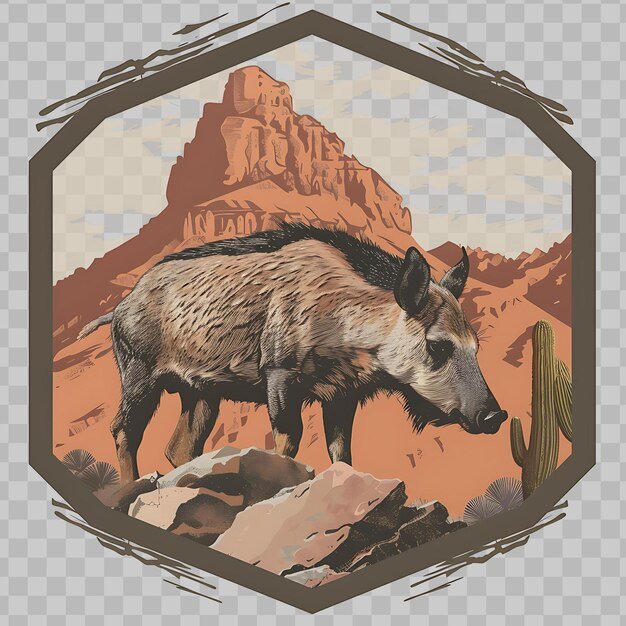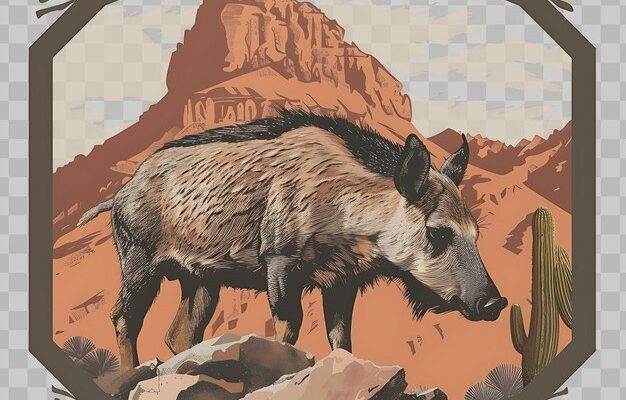
The markhor is a wild goat species native to Central Asia, particularly in mountainous regions of Afghanistan, Pakistan, and parts of northern India. Though they might seem like regular goats at first glance, markhors are much more than that. In fact, their evolutionary history is a tapestry woven with survival, adaptation, and resilience. Understanding their past helps us appreciate not just the markhor itself but the ecosystems they inhabit and the challenges they face today.
A Brief Overview of the Markhor
To appreciate the evolutionary history of the markhor, it’s essential to know what makes this species unique. Markhors are known for their impressive corkscrew-shaped horns, which can grow up to 5 feet in length! These magnificent horns are more than just a pretty sight; they play a role in mating displays and fighting among males. There are several sub-species of markhor, each adapted to different environmental conditions. The two main ones are the Sulaiman markhor and the Baker markhor, both exhibiting distinct physical characteristics and behaviors tied to their habitats.
These goats are typically found at elevations between 3,000 and 12,000 feet. Imagine them leaping gracefully over rocky ledges, their hooves perfectly adapted for traction. They thrive in rugged terrains, but their habitat also faces threats from factors like poaching and habitat destruction. So, how did the markhor come to be?
Markhors and Their Playful Ancestors
The story of the markhor begins in the distant past, around 15 million years ago, during the Miocene epoch. This era was characterized by the rise of grasslands and the diversification of ungulates. The ancestors of modern markhors likely roamed these ancient lands, evolving from a common ancestor shared with other goat species.
As these early goats adapted to various environmental pressures, they developed traits that would later define the markhor. For instance, the development of those long, spiraled horns can be traced back to sexual selection. Males with larger horns were more successful in attracting mates, leading to a population with increasingly prominent horns over generations. This evolutionary dance between survival and reproduction is what shaped the markhor into the extraordinary animal we see today.
Adaptations for Survival
Markhors are survival experts, and their evolutionary traits reflect that. Their thick coats help them withstand harsh winters, while their color patterns allow them to blend into rocky environments—a skill known as camouflage. This ability helps them avoid predators like snow leopards and wolves, ensuring their survival in a challenging habitat.
In addition to their physical adaptations, markhors have developed social structures that aid in their survival. They tend to live in herds, typically consisting of females and their young, with males leaving the group as they mature. This social behavior offers protection while allowing younger members to learn vital survival skills from adults.
You might be wondering how these adaptations have affected their population dynamics. Changes in habitat and increased human activities have put pressure on their numbers, and while markhors are remarkable survivors, their future remains uncertain.
The Role of Genetics in Markhor Evolution
Genetic studies have revealed some intriguing insights into the markhor’s evolutionary history. Researchers have identified various sub-species of markhor, each with unique genetic makeups shaped by their specific environments. This diversity is vital for the species’ long-term survival, as it enhances their ability to adapt to changing conditions.
For example, a study found that the Baker markhor, which inhabits more temperate regions, exhibits different genetic traits compared to the Sulaiman markhor. Such genetic variations allow populations to adapt to localized environmental challenges, providing them with a better chance of thriving despite changing conditions.
Here’s the thing: as human pressures continue to encroach upon their habitats, conserving genetic diversity within markhor populations becomes crucial. It’s not just about saving a charming goat; it’s about preserving the genetic legacy that could hold the key to their survival.
The Influence of Human Activity
The relationship between markhors and humans is a complex one. Historically, these magnificent creatures were often hunted for their meat and horns, which has significantly impacted their populations. Hunting pressures, combined with habitat loss due to agriculture and urbanization, have led to a decline in markhor numbers.
Conservation efforts have made strides in recent years, mainly focusing on protecting habitats and implementing regulated hunting practices. Some countries have established wildlife reserves where markhors can thrive without the constant threat of poaching. These conservation initiatives highlight a growing recognition of the markhor’s ecological value and the importance of maintaining biodiversity.
Through community engagement and education, locals are becoming key players in conservation efforts. Recognizing the markhor’s contribution to the ecosystem can foster a sense of pride and responsibility, encouraging people to protect this iconic species.
The Markhor Today and Its Future
Today, the markhor is classified as Near Threatened by the International Union for Conservation of Nature (IUCN). While they still face challenges, there are signs of hope. Conservation programs are actively working to bolster populations by protecting their habitats and promoting sustainable practices among local communities.
The markhor’s story is a testament to resilience. By learning about their evolutionary history, we can better appreciate the unique traits that enable these goats to navigate a world filled with challenges. Protecting their future isn’t just about saving a species; it’s about preserving the intricate web of life that includes countless other organisms that share their habitat.
As we reflect on the markhor’s journey, it’s important to remember that every effort counts. Our understanding of this remarkable animal, coupled with committed action, can help ensure that generations to come will still marvel at the sight of these majestic goats scaling rocky cliffs.
In conclusion, the evolutionary history of the markhor is a rich narrative filled with adaptation, survival, and hope. Let’s keep the conversation going about their conservation, ensuring these incredible creatures continue to inspire and thrive.

